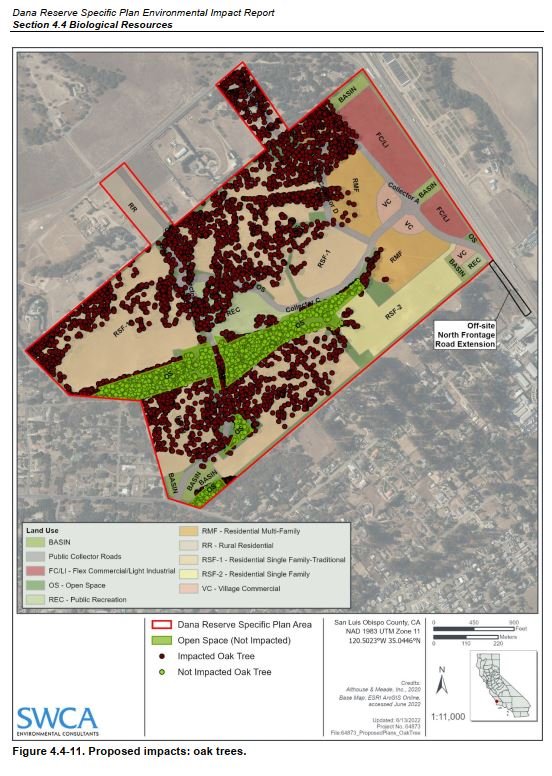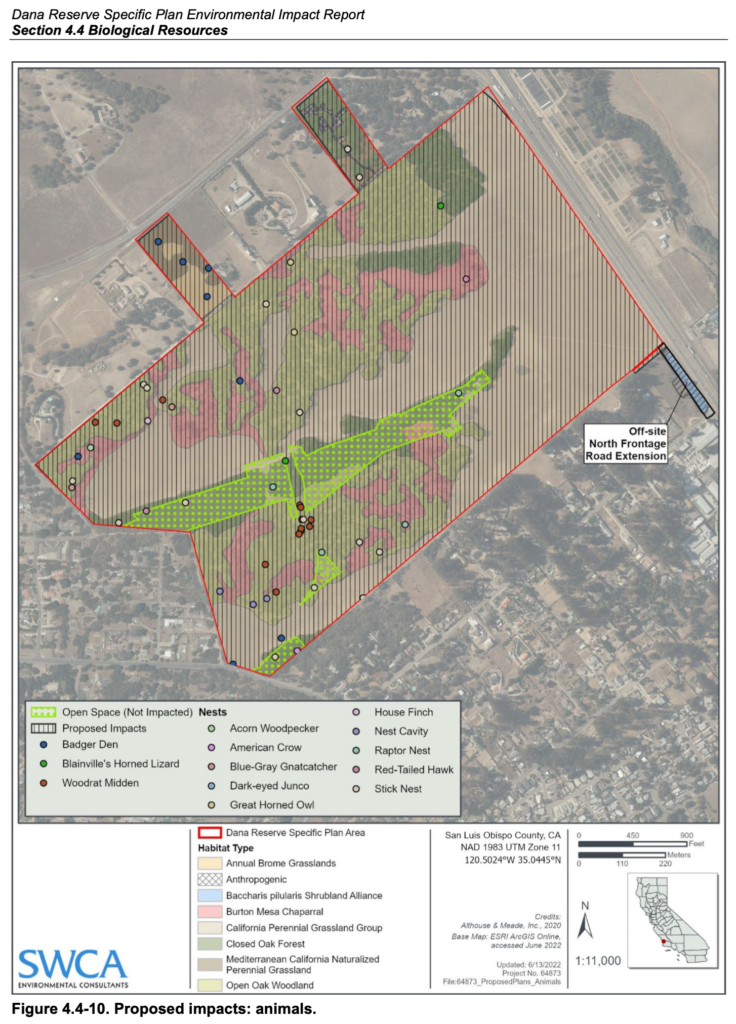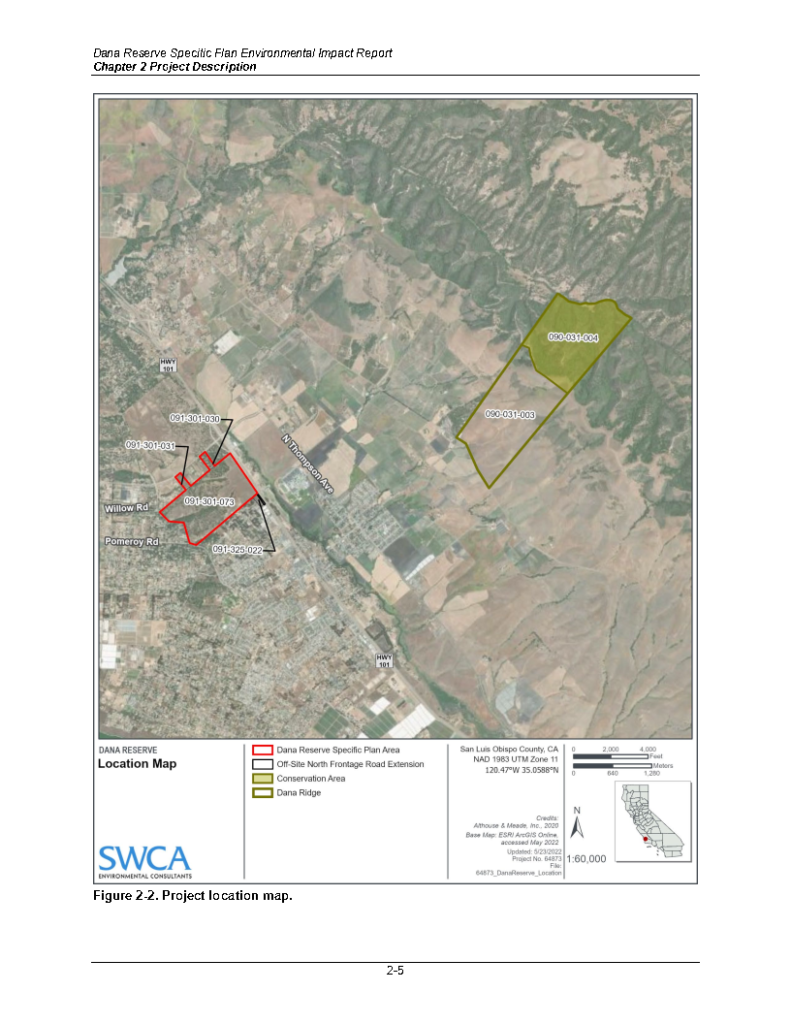Biological Impacts:
The Dana Reserve contains unique biological resources, some of which are found nowhere else in the County:
• Burton Mesa chaparral, a globally rare natural plant community
• The federal and state-listed Pismo Clarkia (FE, SR, CNPS 1B.1)
• Several other special status plant species: sand mesa manzanita (CNPS 1B.2), mesa horkelia (CNPS 1.B.1), sand almond (CNPS 4.3), California spineflower (CNPS 4.2), Lompoc ceanothus (CNPS 4.2), Michael’s Rein-Orchid (CNPS 4.2), and Nipomo Mesa Ceanothus (CNPS 1B.2).
• Roughly 100 acres of oak woodlands and forest, totaling over 3,900 trees
– The project proposes removal of 3,948 oak trees (and an additional 750 could be impacted during construction). 96% of oak woodland, 97% of the sensitive Burton Mesa Chaparral habitat type and impacts Federally Endangered Pismo Clarkia.
– The way in which the project is designed does little to minimize impacts to the oak woodland, oaks, and special status plant and animals. As discussed in the DEIR (Section 4.4), it results in significant, unavoidable impacts to each of these resources.
Link to Biological Report on the Project: https://www.slocounty.ca.gov/Departments/Planning-Building/Forms-Documents/Planning-Projects/Dana-Reserve-Specific-Plan/Draft-Program-Environmental-Impact-Report/Appendix-E-Biological-Resources-Background-Informa.pdf
Link to Biological Section of the EIR: https://www.slocounty.ca.gov/Departments/Planning-Building/Forms-Documents/Planning-Projects/Dana-Reserve-Specific-Plan/Draft-Program-Environmental-Impact-Report.aspx#:~:text=4%2D4%20Biological%20Resources



